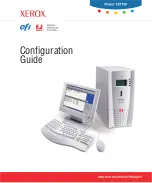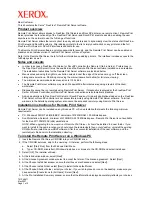
119
D14049.05
February 2009
Grey Headline
(continued)
TANDBERG
VIDEO COMMUNICATIONS SERVER
ADMINISTRATOR GUIDE
Introduction
Getting started
Overview and
status
System
configuration
VCS
configuration
Zones and
neighbors
Call
processing
Bandwidth
control
Firewall
traversal
Appendices
Applications
Maintenance
Disconnecting calls
Disconnecting a call using the web interface
To disconnect one or more existing call using the web interface:
Go to
1.
Status > Calls
.
You will be taken to the
Calls
page.
If you want to confirm the details of the call, including the Call
2.
Serial Number and Call Tag, click
View
. Click the back button
on your browser to return to the
Calls
page.
Check the box next to the call(s) you wish to terminate and
3.
select
Disconnect
.
When disconnecting a call, only the call with that Call
Serial Number will be disconnected. Other calls with the
same Call Tag but different Call Serial Number may not
be affected.
To disconnect an existing call using the CLI, you must first
obtain
either the call ID number or the call serial number
. Then use
either one of the following commands as appropriate:
xCommand DisconnectCall Call: <ID number
•
>
xCommand DisconnectCall CallSerialNumber:
•
<serial number
>
While it is quicker to use the call ID number to reference the call
to be disconnected, there is a risk that in the meantime the call
has already been disconnected and the call ID assigned to a
new call. For this reason, the VCS also allows you to reference
the call using the longer but unique call serial number.
When disconnecting a call, only the call with that Call
Serial Number will be disconnected. Other calls with the
same Call Tag but different Call Serial Number may not
be affected.
Disconnecting a call using the CLI
The call disconnection API works differently for H.323 and SIP
calls due to differences in the way the protocols work.
For H.323 calls, and interworked calls, the
Disconnect
command
will actually disconnect the call.
For SIP calls, the
Disconnect
command will cause the VCS to
release all resources used for the call and the call will appear
on the system as disconnected. However, SIP calls are peer-
to-peer and as a SIP proxy the VCS has no authority over the
endpoints. Although releasing the resources may have the side-
effect of disconnecting the SIP call, it is also possible that the
call signaling, media or both may stay up (depending on the type
of call being made). The call will not actually disconnect until
the SIP endpoints involved have also cleared their resources.
Endpoints that support
RFC 4028 [14]
have a call refresh
timer which should cause them to clear the resources of
any hung SIP calls after a certain period of time. This
includes all TANDBERG endpoints.
Issues when disconnecting SIP calls
















































